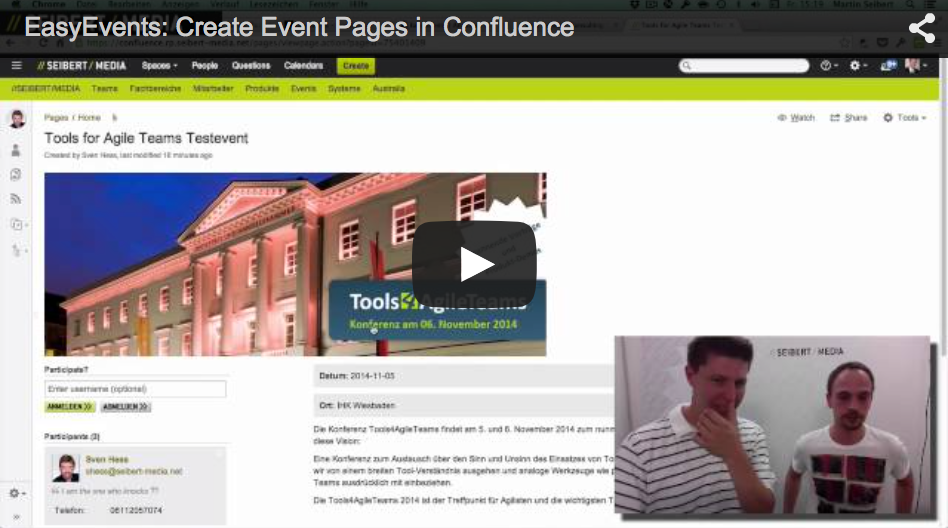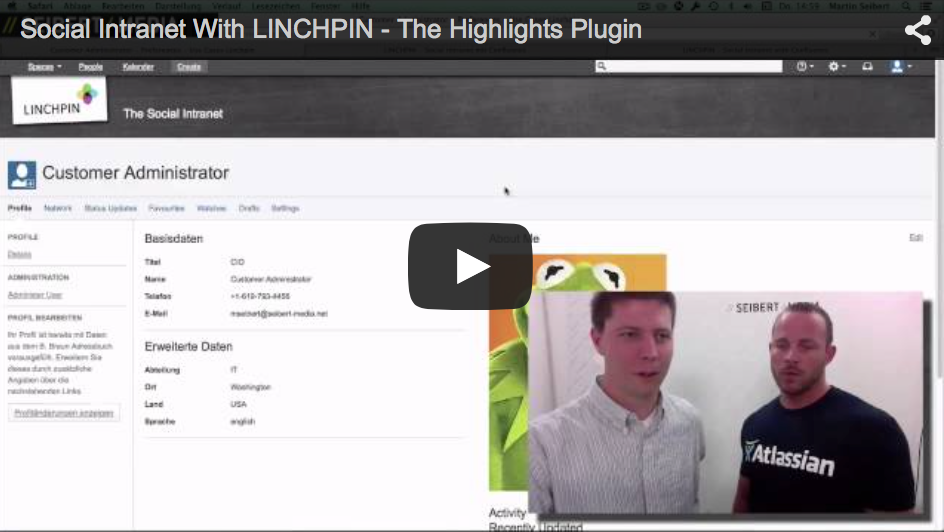Integrate Events in Confluence more smoothly with the Easy Events Plugin. Sven Heß, who was involved in developing the plugin, and Martin Seibert take a look at the features of the plugin. By a simple click, a user can join the event and invite other participants. No need to create and update complicated tables. The plugin is available on the Atlassian Marketplace for only US$ 10 for unlimited users.
Easy Events Plugin – Create Event Pages in Confluence






